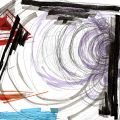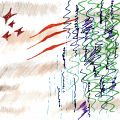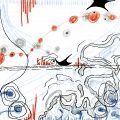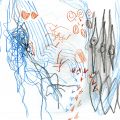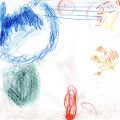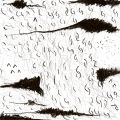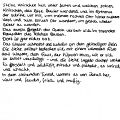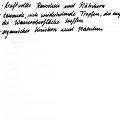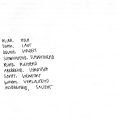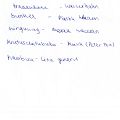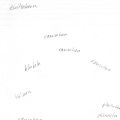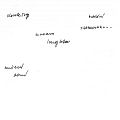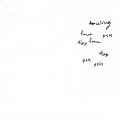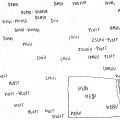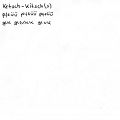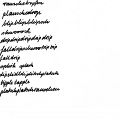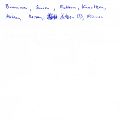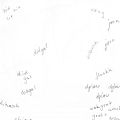mNo edit summary |
No edit summary |
||
| (12 intermediate revisions by 2 users not shown) | |||
| Line 1: | Line 1: | ||
==Learning the Grammar of Animacy (inspired by Kimmerer)<ref>Robin Wall Kimmerer, The Democracy of Species</ref>== | == Learning the Grammar of Animacy (inspired by Kimmerer)<ref>Robin Wall Kimmerer, The Democracy of Species</ref> == | ||
<blockquote>''<nowiki>''</nowiki>I come here to listen, to nestle in the curve of the roots in a soft hollow of pine needles, to lean my bones against the column of white pine, to turn off the voice in my head until I can hear the voices outside it: the 'shhh' of wind in needles, water trickling over rock, nuthatch tapping, chipmunks digging, beechnut falling, mosquito in my ear, and something more - something that is not me, for which we have no language , the wordless being of others in which we have no language, the wordless being of others in which we are never alone.'' | <blockquote>''<nowiki>''</nowiki>I come here to listen, to nestle in the curve of the roots in a soft hollow of pine needles, to lean my bones against the column of white pine, to turn off the voice in my head until I can hear the voices outside it: the 'shhh' of wind in needles, water trickling over rock, nuthatch tapping, chipmunks digging, beechnut falling, mosquito in my ear, and something more - something that is not me, for which we have no language , the wordless being of others in which we have no language, the wordless being of others in which we are never alone.'' | ||
| Line 10: | Line 10: | ||
''To name and describe you must first see, and science polishes the gift of seeing. I honour the strength of the language that has become a second tongue to me. But beneath the richness of its vocabulary and its descriptive power, something is missing, the same something that swells around you and in you when you listen to the world. Science can be a language of distance which reduces a being to its working parts; its a language of objects.<nowiki>''</nowiki>''</blockquote> | ''To name and describe you must first see, and science polishes the gift of seeing. I honour the strength of the language that has become a second tongue to me. But beneath the richness of its vocabulary and its descriptive power, something is missing, the same something that swells around you and in you when you listen to the world. Science can be a language of distance which reduces a being to its working parts; its a language of objects.<nowiki>''</nowiki>''</blockquote> | ||
== | ==Internal imagery and exploratory sketches == | ||
The project reflects R. Murray Schafer, A Sound Education: 100 Exercises in Listening and Sound-making<ref>R. Murray Schafer, A Sound Education: 100 Exercises in Listening and Sound-making</ref> | |||
These exercises are not merely about hearing but about listening with intention, observing with curiosity, and expressing with creativity. The worksheets may provide a structured yet open-ended framework for engaging with the acoustic dimensions of the world around us. | |||
<gallery> | |||
File:Ilm1.jpg | |||
File:Ilm2.jpg | |||
File:Ilm3.jpg | |||
File:Ilm4.jpg | |||
File:Ilm5.jpg | |||
File:Ilm6.jpg | |||
</gallery> | |||
The worksheets I have created are designed to help heighten awareness of the soundscapes in our immediate surroundings. | |||
They begin with an internal image, combined with exploratory sketches, inviting us to elevate listening to a new, visual level. In the next step, we use language to reconnect with the soundscape in a familiar way. Finally, we move beyond conventional expressions and create our own new terms for the sounds we perceive, which can be freely and creatively arranged on the page. | |||
I was inspired by Schafer's "A Sound Education: 100 Exercises in Listening and Sound-Making." | I was inspired by Schafer's "A Sound Education: 100 Exercises in Listening and Sound-Making." | ||
<gallery> | |||
File:ScanNeu.jpg | |||
File:ScanNeu1.jpg | |||
File:ScanNeu2.jpg | |||
</gallery> | |||
== Exercise 1 == | == Exercise 1 == | ||
The process begins with a focus on internal visualization and exploratory sketches, encouraging you to translate what you hear into a '''visual format'''. This method invites a deeper engagement with sound, elevating listening from a passive act to an active, multi-sensory experience. | |||
Find a place where you can fully engage your | Find a place where you can fully engage your senses - step outside your room if you’d like. Spend some time listening closely to the movement of sounds in your environment. | ||
Create | Create a visual representation of the soundscape around you. Use colors, shapes, and patterns to express the sounds - avoid using any words. | ||
<gallery> | |||
File:E1.1.jpg | |||
File:Ex1.2.jpg | |||
File:Ex1.5.jpg | |||
File:Ex1.3.jpg | |||
File:Ex1.6.jpg | |||
File:Ex1.4.jpg | |||
</gallery> | |||
== Exercise 2 == | == Exercise 2 == | ||
The second step involves '''reconnecting with auditory experiences through language'''. By using familiar words and descriptive phrases, you may gain a deeper understanding of the soundscape while framing it within the context of your own linguistic and cultural background. This phase helps to bridge the gap between abstract auditory sensations and the structured world of verbal expression. | |||
Language as a reflection of your soundscape: Use several words to describe a sound from your environment (e.g., gurgling, splashing, bubbling, ...). | Language as a reflection of your soundscape: Use several words to describe a sound from your environment (e.g., gurgling, splashing, bubbling, ...). | ||
<gallery> | |||
File:Ex2.1.jpg | |||
File:Ex2.3.jpg | |||
File:Ex2.4.jpg | |||
File:Ex2.2.jpg | |||
File:Ex2.5.jpg | |||
File:Ex2.6.jpg | |||
</gallery> | |||
== Exercise 3 == | == Exercise 3 == | ||
In the final phase, we move beyond conventional boundaries, venturing into uncharted territory by creating entirely new words to '''describe the sounds we perceive'''. You are encouraged to place these unique terms freely and creatively on the page, breaking away from the constraints of traditional grammar or format. This stage fosters a playful and imaginative relationship with sound, allowing for a more personal and expressive connection to the auditory environment. | |||
Find onomatopoeic words for sounds like raindrops, streams, waterfalls, rivers, or ocean waves, for example: ''clasticy-shash, geeshian, retzensplats, gurglewoo, plittertonk, blibliboop, hwoosh, piddlip, splish, spankle-spickle, pli-pli...'' | Find onomatopoeic words for sounds like raindrops, streams, waterfalls, rivers, or ocean waves, for example: ''clasticy-shash, geeshian, retzensplats, gurglewoo, plittertonk, blibliboop, hwoosh, piddlip, splish, spankle-spickle, pli-pli...'' | ||
Invent one unique onomatopoeic word for each sound you hear. | Invent one unique onomatopoeic word for each sound you hear. | ||
<gallery> | |||
File:Ex3.2.jpg | |||
File:Ex3.3.jpg | |||
File:Ex3.4.jpg | |||
File:Ex3.5.jpg | |||
File:Ex3.12.jpg | |||
File:Ex3.10.jpg | |||
</gallery> | |||
== Project development == | |||
During the ''Winning Natural Habitats'' course, we developed a deeper awareness of our natural environment by small field trips and regular exchange as well as creating a biotope at the Campus. Initially, I envisioned a project that would incorporate various technologies to transform photographs and self-written texts - inspired by our course - into an interactive installation. | |||
Reading ''Gathering Moss'' by Robin Wall Kimmerer, a recommended text from the course, deepened my understanding of how language shapes our perception of nature. Kimmerer uses the world of mosses to illustrate that even the smallest microorganisms are active participants in our ecosystems, just like forests and entire biomes - all shaped by the same environmental factors. I found a certain, powerful poetry in the way small-scale phenomena can be translated into a broader context and vice versa. | |||
'''With my work for our ''Winning Natural Habitats'' course, I particularly want to rediscover and explore the act of listening together.''' Listening enables us to attune to aspects of nature that reveal themselves through our most sensitive sense, yet often go unnoticed when we rely primarily on sight or movement, such as during a walk. | |||
I have come to the conclusion that an analog approach - pen and paper - preserves the essence of this experience best, as it avoids distorting it through my own artistic interpretation or technological manipulation. | |||
== Future prospects and project development == | |||
Expanding this work by conducting the worksheets regularly and across multiple generations, rather than limiting participation to students, would be a valuable next step. The collected data, particularly the images, could later serve as a strong foundation for an interactive installation, requiring only further refinement. | |||
This course has reinforced my belief that when working with environmentally and politically rooted topics, it is crucial to first gather data before incorporating technological enhancements. This approach ensures that installations remain meaningful rather than purely aesthetic without substance. I am grateful for this insight. | |||
== References == | |||
Latest revision as of 11:47, 16 March 2025
Learning the Grammar of Animacy (inspired by Kimmerer)[1]
''I come here to listen, to nestle in the curve of the roots in a soft hollow of pine needles, to lean my bones against the column of white pine, to turn off the voice in my head until I can hear the voices outside it: the 'shhh' of wind in needles, water trickling over rock, nuthatch tapping, chipmunks digging, beechnut falling, mosquito in my ear, and something more - something that is not me, for which we have no language , the wordless being of others in which we have no language, the wordless being of others in which we are never alone.
[...]
Listening in wild places, we are audience to conversations in a language not our own.
[...]
To name and describe you must first see, and science polishes the gift of seeing. I honour the strength of the language that has become a second tongue to me. But beneath the richness of its vocabulary and its descriptive power, something is missing, the same something that swells around you and in you when you listen to the world. Science can be a language of distance which reduces a being to its working parts; its a language of objects.''
Internal imagery and exploratory sketches
The project reflects R. Murray Schafer, A Sound Education: 100 Exercises in Listening and Sound-making[2]
These exercises are not merely about hearing but about listening with intention, observing with curiosity, and expressing with creativity. The worksheets may provide a structured yet open-ended framework for engaging with the acoustic dimensions of the world around us.
The worksheets I have created are designed to help heighten awareness of the soundscapes in our immediate surroundings.
They begin with an internal image, combined with exploratory sketches, inviting us to elevate listening to a new, visual level. In the next step, we use language to reconnect with the soundscape in a familiar way. Finally, we move beyond conventional expressions and create our own new terms for the sounds we perceive, which can be freely and creatively arranged on the page.
I was inspired by Schafer's "A Sound Education: 100 Exercises in Listening and Sound-Making."
Exercise 1
The process begins with a focus on internal visualization and exploratory sketches, encouraging you to translate what you hear into a visual format. This method invites a deeper engagement with sound, elevating listening from a passive act to an active, multi-sensory experience.
Find a place where you can fully engage your senses - step outside your room if you’d like. Spend some time listening closely to the movement of sounds in your environment.
Create a visual representation of the soundscape around you. Use colors, shapes, and patterns to express the sounds - avoid using any words.
Exercise 2
The second step involves reconnecting with auditory experiences through language. By using familiar words and descriptive phrases, you may gain a deeper understanding of the soundscape while framing it within the context of your own linguistic and cultural background. This phase helps to bridge the gap between abstract auditory sensations and the structured world of verbal expression.
Language as a reflection of your soundscape: Use several words to describe a sound from your environment (e.g., gurgling, splashing, bubbling, ...).
Exercise 3
In the final phase, we move beyond conventional boundaries, venturing into uncharted territory by creating entirely new words to describe the sounds we perceive. You are encouraged to place these unique terms freely and creatively on the page, breaking away from the constraints of traditional grammar or format. This stage fosters a playful and imaginative relationship with sound, allowing for a more personal and expressive connection to the auditory environment.
Find onomatopoeic words for sounds like raindrops, streams, waterfalls, rivers, or ocean waves, for example: clasticy-shash, geeshian, retzensplats, gurglewoo, plittertonk, blibliboop, hwoosh, piddlip, splish, spankle-spickle, pli-pli...
Invent one unique onomatopoeic word for each sound you hear.
Project development
During the Winning Natural Habitats course, we developed a deeper awareness of our natural environment by small field trips and regular exchange as well as creating a biotope at the Campus. Initially, I envisioned a project that would incorporate various technologies to transform photographs and self-written texts - inspired by our course - into an interactive installation.
Reading Gathering Moss by Robin Wall Kimmerer, a recommended text from the course, deepened my understanding of how language shapes our perception of nature. Kimmerer uses the world of mosses to illustrate that even the smallest microorganisms are active participants in our ecosystems, just like forests and entire biomes - all shaped by the same environmental factors. I found a certain, powerful poetry in the way small-scale phenomena can be translated into a broader context and vice versa.
With my work for our Winning Natural Habitats course, I particularly want to rediscover and explore the act of listening together. Listening enables us to attune to aspects of nature that reveal themselves through our most sensitive sense, yet often go unnoticed when we rely primarily on sight or movement, such as during a walk.
I have come to the conclusion that an analog approach - pen and paper - preserves the essence of this experience best, as it avoids distorting it through my own artistic interpretation or technological manipulation.
Future prospects and project development
Expanding this work by conducting the worksheets regularly and across multiple generations, rather than limiting participation to students, would be a valuable next step. The collected data, particularly the images, could later serve as a strong foundation for an interactive installation, requiring only further refinement.
This course has reinforced my belief that when working with environmentally and politically rooted topics, it is crucial to first gather data before incorporating technological enhancements. This approach ensures that installations remain meaningful rather than purely aesthetic without substance. I am grateful for this insight.









